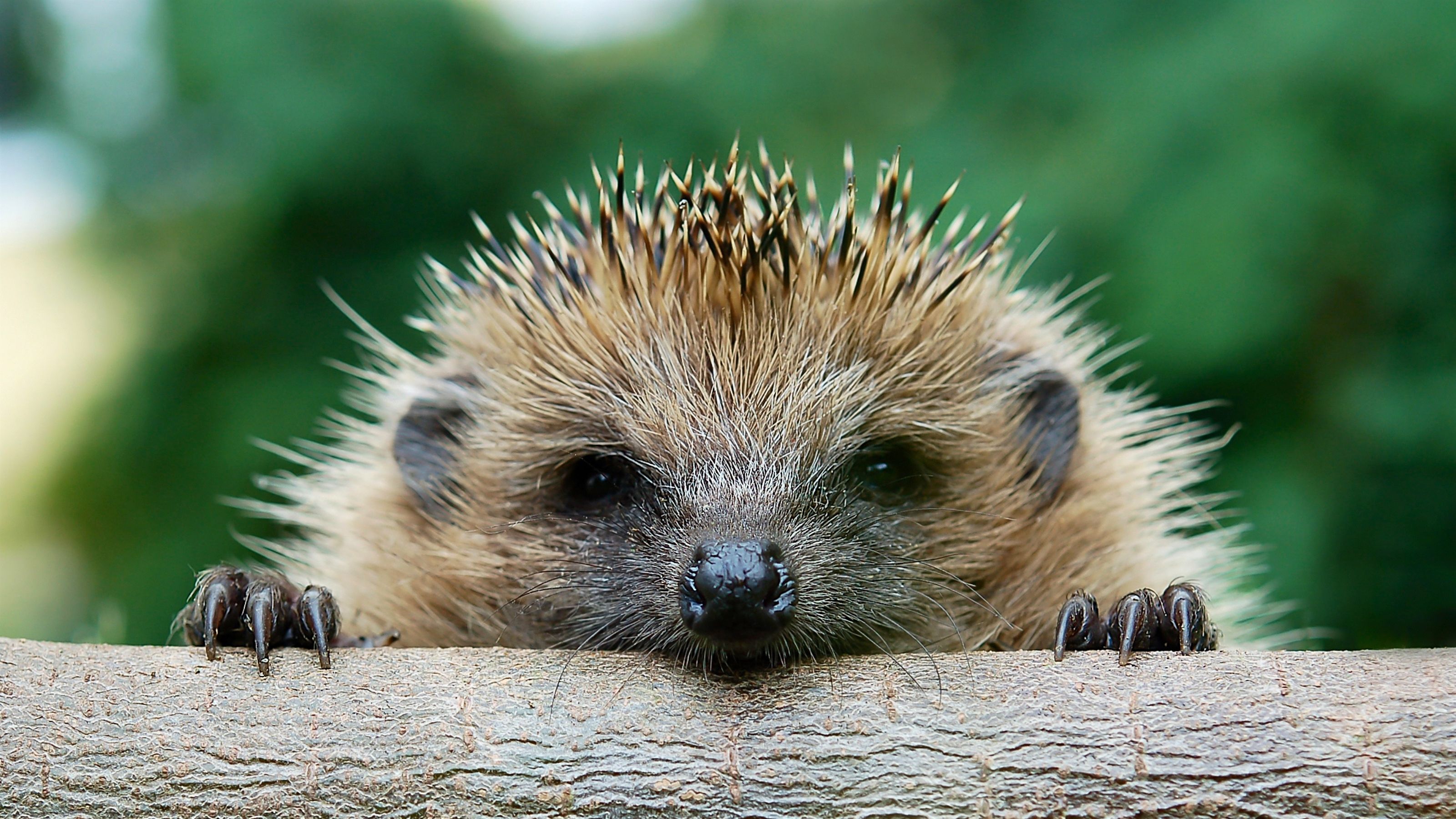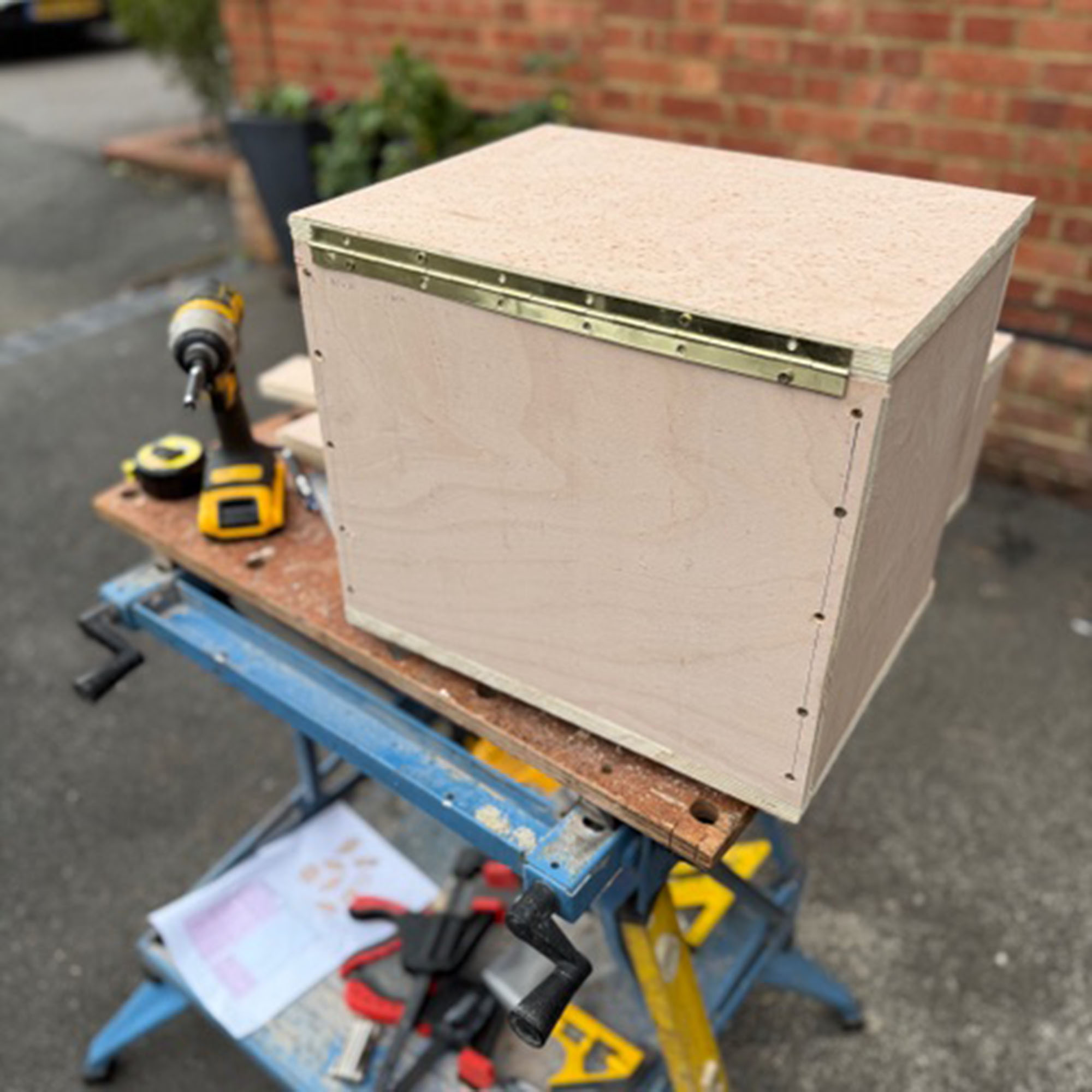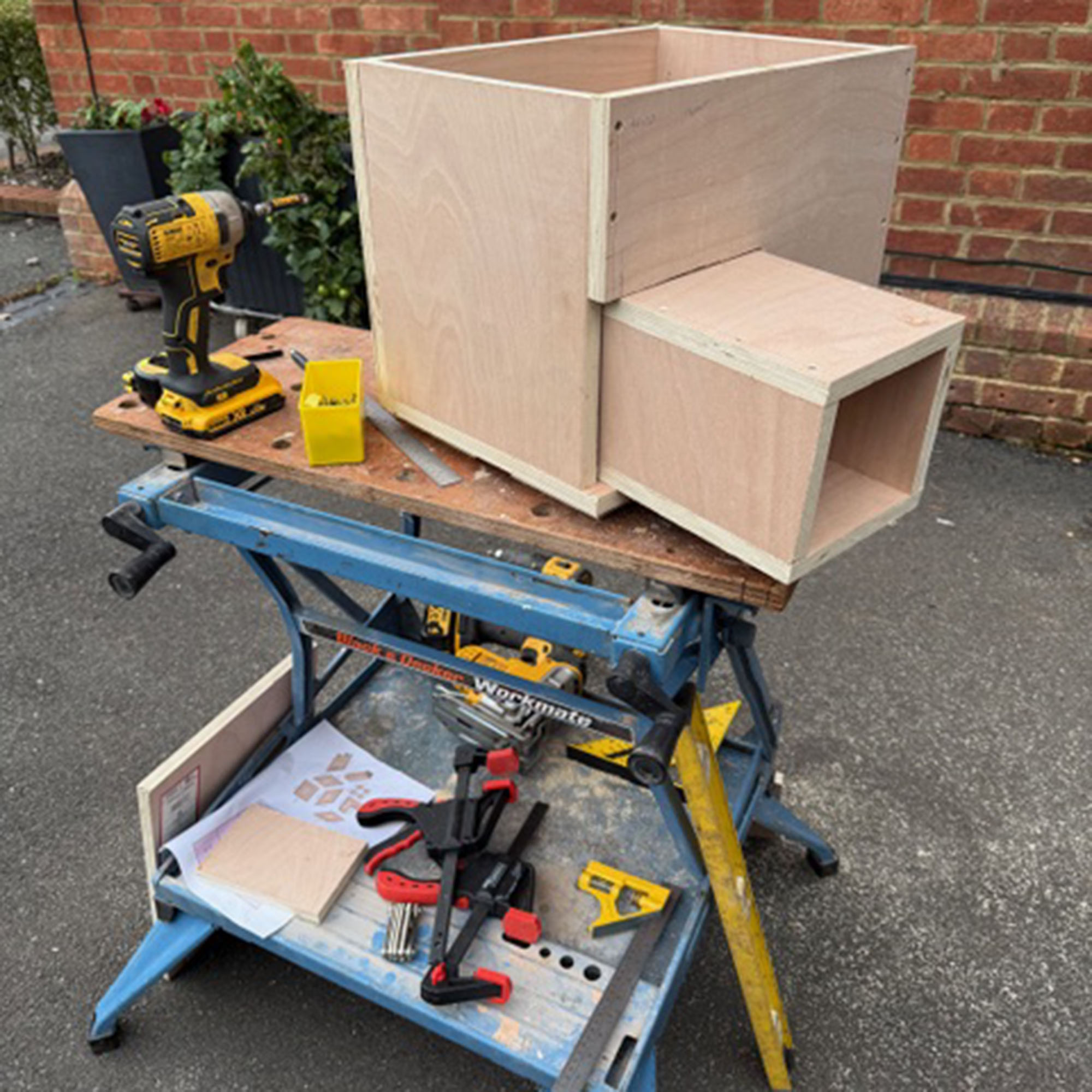The one autumn garden job I never forget to do before Bonfire Night as a gardens editor – it could save hedgehogs' lives
This cute garden project is well worth your time ahead of 5th November...


Once upon a time, I loved fireworks. They were fizzing bath bombs in the sky, snap, crackle and popping with such colour and ferocity that it all but squeezed the breath out of my lungs. Nowadays, though, I know about their dark side – which is why I’m challenging everyone to build a DIY hedgehog house before Bonfire Night.
I first vowed to make my garden more hedgehog-friendly when I learned that there are fewer and fewer of these prickly creatures to be found in the UK each year. So, when I learned how often hedgehogs mistake bonfire stacks for cosy hibernation spots, I was horrified.
Confession time: I’ve never been what you’d call a DIY natural, even when it comes to making my wildlife garden ideas a reality. Still, I was determined to do something small but meaningful to help, so I called in my long-suffering father-in-law, who can basically do anything with his trusty toolkit – as long as there’s a cup of tea in it for him.
Why Bonfire Night is such a bad time for hedgehogs
Before I leap into the how, let's spend some time on the why. As the RSPB explains, 'a well-prepared bonfire stack of branches, leaves and garden cuttings can bear a very close resemblance to an appealing hibernation spot' for hedgehogs.
Their advice is to hold off assembling your bonfire until the day before you plan to light it, or better still, move it to a new spot entirely before striking a match. That way, any hedgehogs, amphibians, or insects that have taken shelter get a safe escape.
And if you really want to go the extra mile? 'You could look to provide a hedgehog house,' says the RSPB. 'DIY kits or readymade houses are available to purchase from the RSPB Shop, or if you fancy the kudos of building your own from scratch, you can find full instructions on the RSPB website.
I can confirm: the kudos has proven more than worth it.
Sign up to our newsletter for style inspiration, real homes, project and garden advice and shopping know-how

Building the house

While some wildlife garden ideas can add £30K to your house's value, this DIY hedgehog house is a little humbler: it's basically a wooden box with a sloping roof and a narrow entrance tunnel to keep predators out.
My father-in-law upped the ante by adding a hinge to the roof to make it easier to open and clean out, but it’s hardly the stuff of Grand Designs. Still, it’s sturdy, weatherproof, and far less likely to collapse than the IKEA bookshelf I once assembled solo.
And, as is so often the case in life, it's not so much the item itself as it is how you use it. Or, in the case of a DIY hedgehog house, where you place it.
Finding the perfect spot
Hedgehogs like peace and quiet, not prime lawn real estate, so I tucked my DIY hedgehog house in the blackberry bushes behind our garden shed; it’s shady, sheltered, and almost hidden from view... which is exactly what they like.
'Hedgehog homes are a wonderful way to support these much-loved visitors and give them a safe, secure place in your garden,” says Sharon Jacobs, Head Wildlife Vet Nurse at Tiggywinkles Wildlife Hospital, who currently oversees more than 300 hedgehog patients.
'The key to success is location – tucking the home under a hedge, shrub, or beside a compost heap provides natural shelter and keeps it out of sight, helping hedgehogs feel protected.'

I wanted my DIY hedgehog house to be extra cosy, so I added a bit of soft hay (Amazon's Pillow Wad Maxi Meadow Hay, to be precise) and a few handfuls of dry leaves, then scattered some more leaf litter around the entrance.
'Hedgehogs not only use these for nesting material, but the leaf litter is also a vital hunting ground for beetles and insects – their natural diet,' says Sharon.
To make sure my new residents weren’t disturbed, I left plenty of cover around the box and resisted the urge to ‘tidy’ too much. Autumn gardens can look messy, but every leaf and log pile provides crucial shelter for wildlife.
FAQs
Which way should a hedgehog house face?
Ideally, position the entrance to your DIY hedgehog house away from prevailing winds (usually facing east or south-east) to keep out cold draughts. Tuck the house against a hedge, fence, or wall for extra shelter, and camouflage it with leaves and twigs so it blends naturally into its surroundings.
Do I need to provide food inside a hedgehog house?
It might seem counterintuitive, but you shouldn't provide food inside a hedgehog house. ’s best not to. As Sharon Jacobs of Tiggywinkles Wildlife Hospital explains, 'If you’re also offering food and water, make sure this is set out at a good distance from the nest box'.
This, she says, prevents 'the smell of food from drawing in other animals, such as cats or foxes, to the hedgehog’s resting place.'
Provide food and water in shallow dishes (you can buy a pack of three hedgehog bowls via Amazon) elsewhere in the garden instead.
It's a great thing to get built ahead of the bangs of 5 November, but remember: the beauty of a DIY hedgehog house is that it’s not just for Bonfire Night.
'Hedgehogs need shelter not only for hibernation in winter but also for nesting in spring and summer,' says Dr Emily Attlee, conservation scientist and co-founder of Seedball. 'Start by choosing a quiet, undisturbed corner of your garden, ideally tucked beneath shrubs, hedges, or a pile of leaves. A simple wooden box with a sloping roof works brilliantly, but you can also use logs, bricks, and paving slabs to build a sturdy hideaway.'
Attlee also points out that what you plant nearby matters just as much as the house itself. 'Dense shrubs, wildflowers, and long grasses all create cover and attract the beetles, caterpillars, and worms that hedgehogs love to munch. A log pile or compost heap close by is also a brilliant food source.'
I loved the idea of turning one quiet corner of the garden into a mini wildlife zone. It doesn’t take much space or effort, but it feels like a positive way to offset the chaos of fireworks and cold nights.
So, while my father-in-law packed up his drill and muttered something about “mission accomplished,” I stood in the drizzle admiring our (fine, his) handiwork. It’s not perfect, but it’s something.
And hey, what kind of monster would I be if I can't offer small refuge or one of Britain’s most charming, and increasingly vulnerable, garden guests, eh?

Kayleigh Dray became Ideal Home’s Acting Content Editor in the spring of 2023, and is very excited to get to work. She joins the team after a decade-long career working as a journalist and editor across a number of leading lifestyle brands, both in-house and as a freelancer.